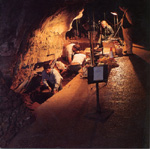 |
Interior
of Gough's Cave showing the 1986 excavation area.
(c) Dr Ruth Charles |
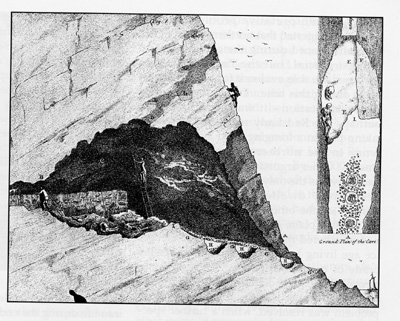 |
Paviland
Cave Excavation (from Buckland) |
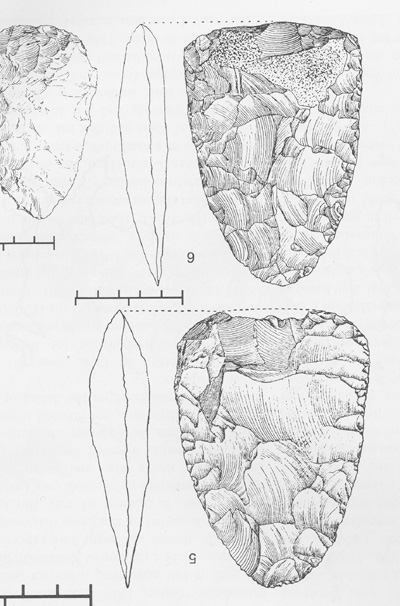 |
Mousterian
Bout Coupé handaxe. Late Oxygen Isotope Stage 3. |
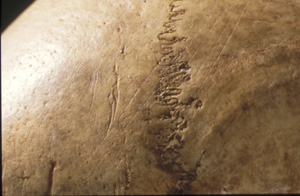 |
Gough's
Cave adult calotte showing cutmarks indicative of skinning and scalping.
Excavated in 1987, the cranium has been dated to the late glacial
interstadial (12,380 +/_ 110 radiocarbon years, OXA-2796. The Cave
has produced many human bones, some of which bear cutmarks and marrowbone
breakage suggestive of cannibalism. |
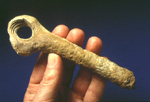 |
Reindeer
antler bâton excavated from Gough's Cave in 1989. An AMS date
of 11, 870 +/_ 110 (OXA 2797) provides the first direct date for
a baton from any northwest European site. Occupation at the site
covers part of the late glacial interstadial ~12,000 radiocarbon
years ago; the range of dates on hominid bones and humanly modified
bones suggestions accumulation was not a single event. |
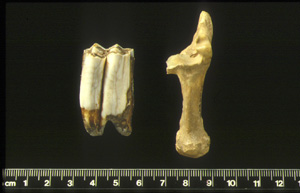  |
Saiga
antelope, Saiga tatarica, upper molar and calcaneus (Gough's
Cave, Mendip, Somerset) dated to 12, 380 +/_ 160 BP (OXA 463). The
present-day saiga is found in steppe and semi-desert in Central
Asia. Fossil localities from the fringes of Western Europe to Alaska
indicate an expansion of dry steppic conditions across the Northern
Hemisphere at ~ 12 kya. |
 |
Gough's
Cave, Mendip, Somerset. Late Upper Palaeolithic (Creswellian) blades
from the 1987 excavation. |
|
Paviland
Cave, Gower. Excavations in the 1820s recovered the spectacular
burial of an adult male covered in red ochre and accompanied by
numerous grave goods. AMS dates suggest multiple phases of occupation
and ritual use of the site. |








